 Nevus sebaceous - Wikipedia
Nevus sebaceous - WikipediaWarning: The NCBI website requires JavaScript to operate. Nevus Sebaceus de JadassohnKelly Segarsa Faculty of Osteopathic Medicine, Nova Sureste University, Davie, FlaJared M. GopmanbDivision of Plastic Surgery, Department of Surgery, University of Morsani Medicine, University of South Florida, TampaJoshua B. ElstonbDivision of Plastic Surgery, Department of Surgery, University of Morsani Medicine, University of South Florida, Tampa Michael A. HarringtonbDivision of Plastic Surgery, Department of Surgery, Morsani College of Medicine, University of South Florida, TampaDESCRIPTIONA 10-year-old boy presented for assessment of a congenital scalp lesion in slow growth (y ). He had no other growth or development anomalies. His mother was worried that he would tease at school and also that he might be cancerous because he had grown up. Hairless vertex lesions present since birth that has been slowly enlarging. Extended view of the lesion of the scalp vertex with a soft, tanned and similar appearance to the plate. ISSUES What is Jadassohn's nevus sebaceus (NS)? What are the stages of clinical progression? What is the basis of excision versus observation? When should the excision be made? DISCUSSION Nevus sebaceus of Jadassohn is a congenital anomaly described by the dermatologist Josef Jadassohn in 1895. It is a congenital hamartomatose lesion with epithelial and annexal origin present in approximately 0.3% of newborns that may contain any component of skin including sebaceous glands and apocrins or capillary follicles.- If it is associated with syndromatic characteristics such as mental retardation, central nervous system abnormalities, oculocardial defects or skeletal abnormalities, it is called nevus linear sebacetic syndrome, or Schimmelpenning syndrome (neurocutaneous phomatosis). During childhood, the NS typically appears as a yellow plate or smooth or circular velvet. Basically, it is in the vertex of the scalp but has been described in other areas such as the face or neck. In puberty, hormonal changes cause proliferation and hyperplasia of the lesion and lead to a larger and more verrucous appearance that can become quite large. Later in life, lesions can develop benign or malignant tumors that cause further defiguration. Individuals with NS can develop benign or malignant tumors, with growing evidence that supports the first to be the majority. A meta-analysis of 4900 cases found secondary tumor development in 24 per cent of patients, most benign basaloid proliferations as trichoblastomas. Malignant transformations have been reported with an average incidence of 8% and range from 0% to 22%, more commonly carcinoma of basal cells, although there is some controversy of falsely high estimates, given the maldiagnosis of trichoblastomas that seem histologically similar to basal cell carcinoma in previous reports, the time of surgery is controversial. Although smaller lesions can be technically easier to excite, younger patients may not be amenable to local anesthesia or may safely tolerate a general anesthesia. The secondary transformation of the tumor appears to be seen almost exclusively in adults, as a retrospective analysis found that 96% of all malignant tumors led by the NS occurred in patients over 18 years of age and the remaining 4% in patients aged 11 to 17. This has led to popularized reasoning to excite before pubertal enlargement and when local and general anesthesia are well tolerated in the face of clinical observation until malignant characteristics develop. The therapeutic management of NS includes the excision of total disease with clear margins. It has been shown that CO2 lasers enhance the cosmesis but can only reach the papillary dermis and therefore are not recommended because of the possibility of malignant degeneration of the remaining cells in the lower dermis. Nevus sebaceus is a rare congenital anomaly that can lead to cosmetic deformity, alopecia or malignant transformation in rare circumstances. The lesion is usually present at birth, slowly enlarged with age, and usually grows faster during the pubertal hormonal increase. The most common malignant transformation is in basal cell carcinoma, but the most common growth is a benign tricomastoma. There is no definitive consensus on surgical intervention against close observation. In the absence of disturbing signs for malignant transformation, NS management is a better decision taken by the child, his family and surgeon, based on the safety/tolerability of anesthesia, his or her oncological security expectations, and the understanding of the most extensive excision required should increase growth. REFERENCESFormats: Share , 8600 Rockville Pike, Bethesda MD, 20894 USA
Copyright:PubMed Search: Nevus sebaceus Nevus sebaceus of Jadassohn

Nevus Sebaceous: Removal, Cancer, Treatment, and More
Nevus Sebaceus of Jadassohn | NEJM
Pathology of Nevus Sebaceous (Organoid Nevus) - Dr Sampurna Roy MD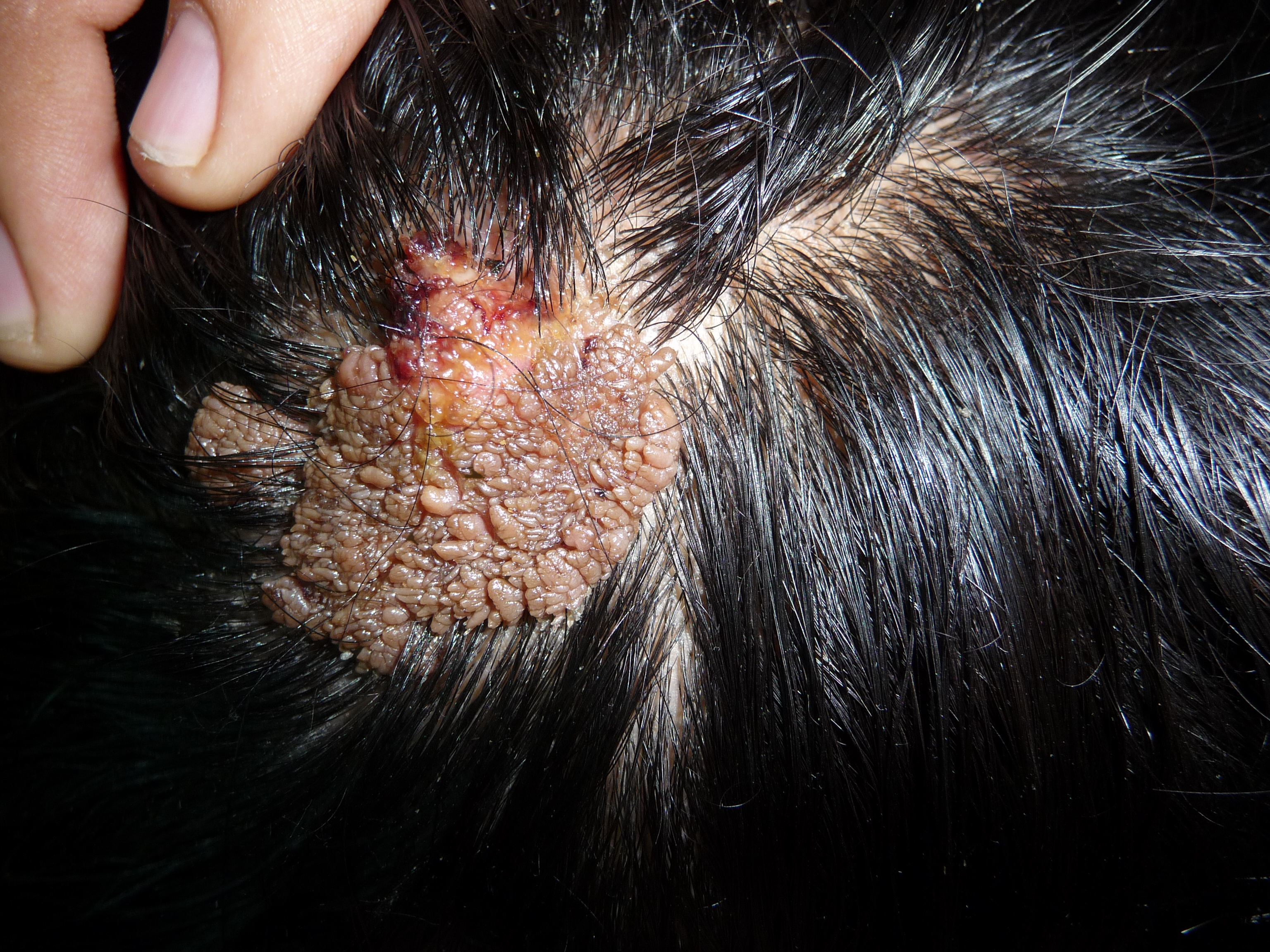
Nevus Sebaceus Article
Nevus sebaceous | CMAJ
Nevus Sebaceus (Nevus Sebaceus of Jadassohn, nevus epitheliomatous capitis, organoid nevus) - Dermatology Advisor
Autosomal dominant transmission of nevus sebaceous of Jadassohn
Figure 1 from Nevus Sebaceous of Jadassohn – A Rare Case Report | Semantic Scholar
Cerebriform Nevus Sebaceous of Jadassohn
Nevus Sebaceus (Nevus Sebaceus of Jadassohn, nevus epitheliomatous capitis, organoid nevus) - Dermatology Advisor
Rare desmoplastic trichilemmoma associated with sebaceous nevus
Autosomal dominant transmission of nevus sebaceous of Jadassohn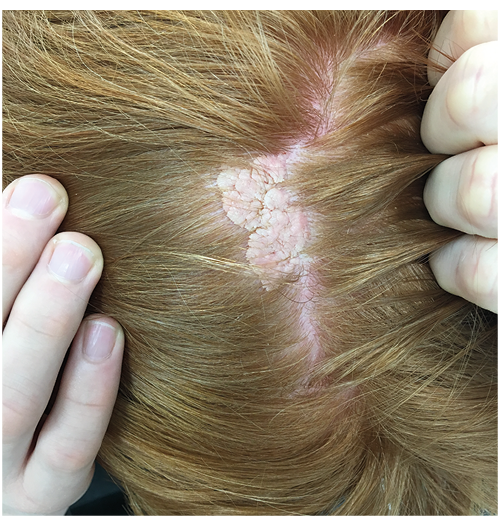
Microcystic Adnexal Carcinoma Originating in a Nevus Sebaceous: A Case Report of a 16-year-old Boy | HTML | Acta Dermato-Venereologica
13-year-old girl with lesion on scalp
Basal Cell Carcinoma Arising in Nevus Sebaceous During Pregnancy | MDedge Dermatology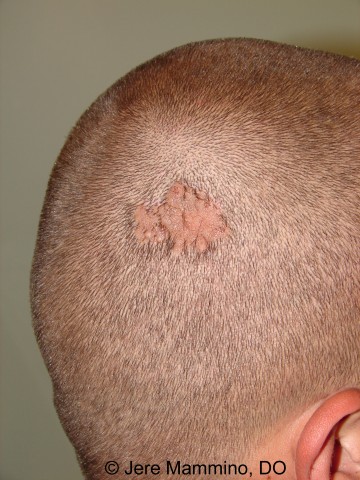
Nevus Sebaceus - American Osteopathic College of Dermatology (AOCD)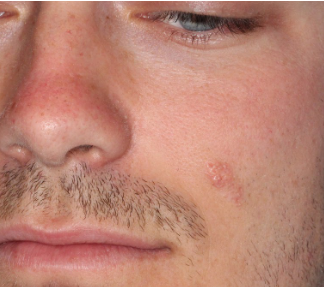
Sebaceous Nevus of Jadassohn - Skin Cancer and Reconstructive Surgery Center
Apocrine Carcinoma Arising in a Sebaceous Nevus of the Scalp in a 24-Year-Old Female | Global Surgery Case Reports | Science Repository | Open Access
Nevus Sebaceus: Of Jadassohn... - Academic Dermatology of Nevada
Figure 1 from Nevus Sebaceus of Jadassohn | Semantic Scholar
Nevus Sebaceous of Jadassohn (image)
Sebaceous naevus | DermNet NZ
Surgical excision of sebaceous nevus in children: What are the risks? Tang MY, Chao SY - J Dermatol Dermatol Surg
Ceruminous adenoma (ceruminoma) arising in a nevus sebaceus of Jadassohn within the external auditory canal of a 3 year-old boy – A case report - ScienceDirect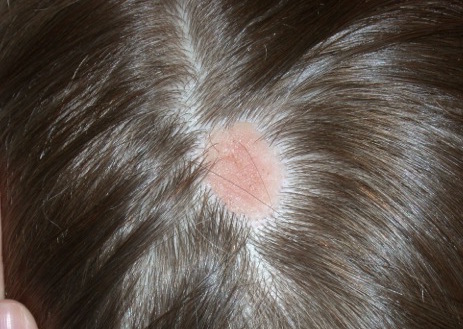
Pediatric Dermatology Consult - May 2017 | MDedge Pediatrics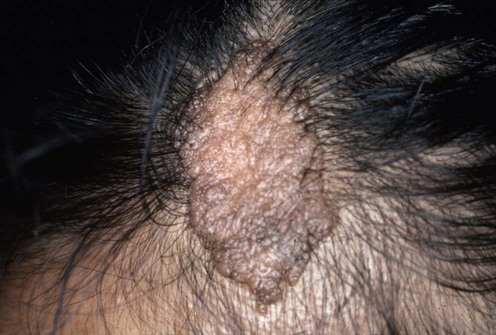
Nevus sebaceus | Plastic Surgery Key
Nevus Sebaceus: Of Jadassohn... - Academic Dermatology of Nevada
Pathology Outlines - Nevus sebaceus of Jadassohn
Nevus Sebaceous: Removal, Cancer, Treatment, and More
Figure 2 from TUMORS DEVELOPED ON SEBACEOUS NEVUS OF JADASSOHN . CLINICAL OBSERVATIONS | Semantic Scholar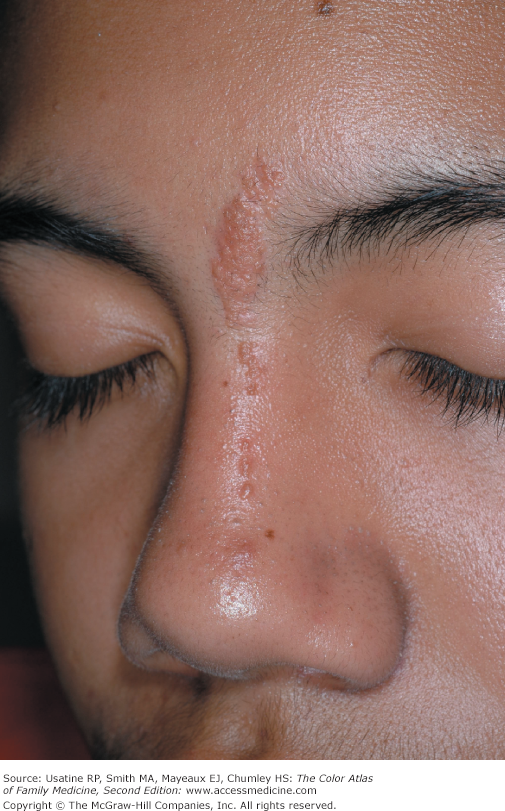
Epidermal Nevus and Nevus Sebaceous | Basicmedical Key
Facebook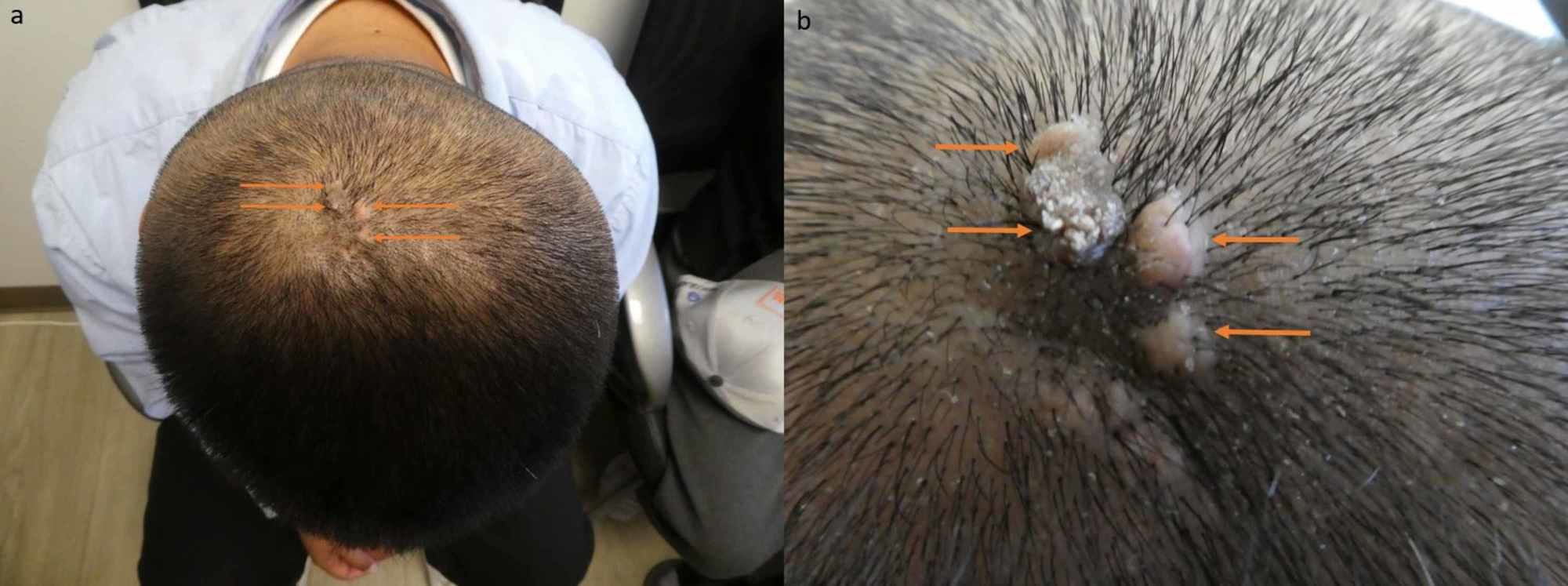
Cureus | Osteoma Cutis Associated with Nevus Sebaceus: Case Report and Review of Cutaneous Osteoma-associated Skin Tumors (COASTs)
Nevus sebaceous on the scalp (A) and chin (B). | Download Scientific Diagram
Nevus sebaceous
A child with a congenital epidermal nevus, epilepsy and developmental delays: Linear nevus sebaceous syndrome | Semantic Scholar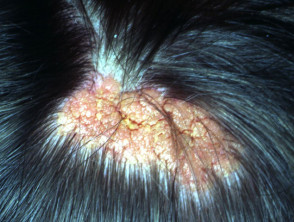
Sebaceous naevus | DermNet NZ
Pathology Outlines - Nevus sebaceus of Jadassohn
Qiao's Pathology: Nevus Sebaceus of Jadassohn (Organoid Ne… | Flickr
Qiao's Pathology: Nevus Sebaceus of Jadassohn (Organoid Ne… | Flickr
 Nevus sebaceous - Wikipedia
Nevus sebaceous - Wikipedia





































Posting Komentar untuk "nevus sebaceus of jadassohn"